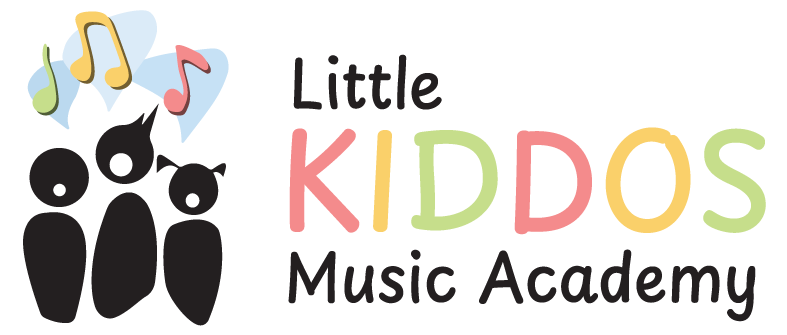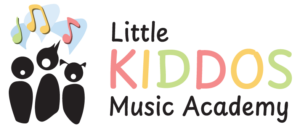How I teach the language of music
It is well known that early childhood is the perfect time to learn language. The neuroplasticity of their brains provides adaptability, making them capable of forming new neural connections. This flexibility allows them to absorb and process new languages more naturally. In other words: the littlest kiddos are absolute sponges when it comes to putting together sound and meaning! They are amazing at mimicking sound and love to do it. So, why shouldn’t we use this window to also teach the language of music?! Preschool music classes and content can, and should, be an opportunity to introduce music theory and music vocabulary.
I sprinkle in music theory, concepts, symbols and vocabulary into everything we do in Little Kiddos Music Academy. It works! Instead of saying that a certain instrument is loud, in our preschool music classes, we say it is FORTE! Loud! When we sway our bodies very slowly side-to-side, we are moving L-a-r-g-o! Very slow! I use tons of repetition, scripted phrases that always stay the same, and visuals to reinforce these concepts. We use our bodies to experience the concepts too – patting different rhythms or stomping our feet. And, of course when the vocabulary words of music (“Fancy Pants Music Words!”) are set to rhythms, rhymes and melody, it locks in their minds even more.
My favorite thing is to hear parents say things like, “My three year old just asked the dog to be more pianissimo” or when pouring cereal for one tempos-loving kiddo, a mother was told, “Mom, go more presto! You aren’t even going vivace. You are BARELY going faster than largo. MAYBE you are going moderato…but probably not.”
Preschool music education is the perfect time to introduce deeper musical concepts. Even the littlest kiddos can speak the language of music!
Our Tempo Fancy Pants Music Words:

You can visit Little Kiddos Music to see the list of some of our Fancy Pants Music Words.

